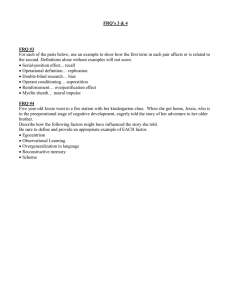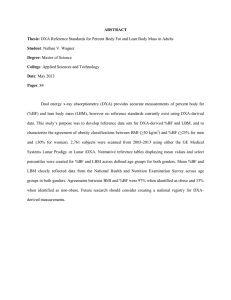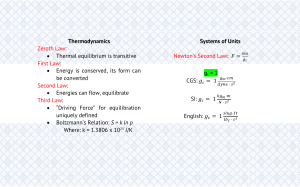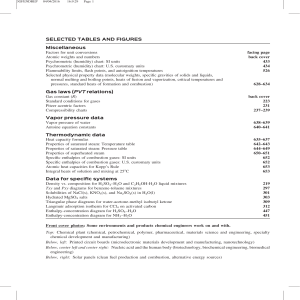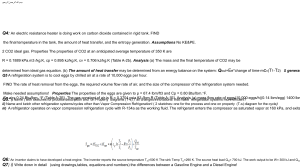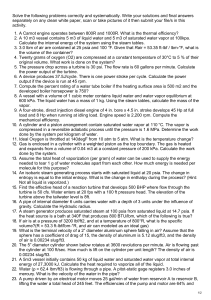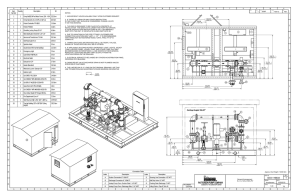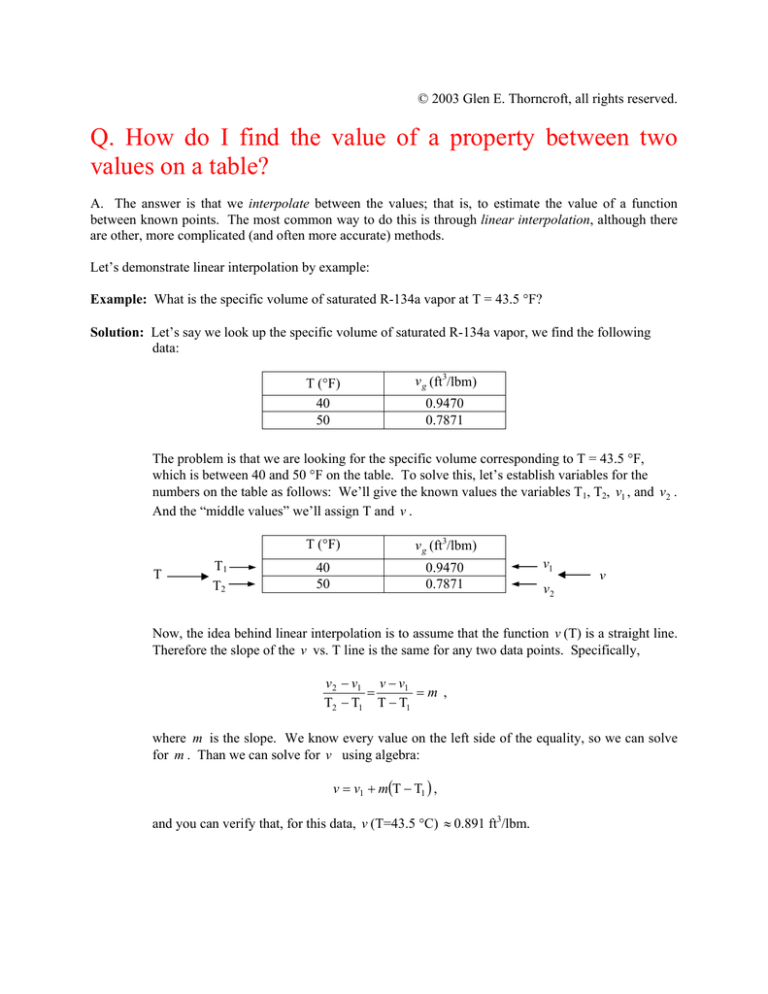
© 2003 Glen E. Thorncroft, all rights reserved.
Q. How do I find the value of a property between two
values on a table?
A. The answer is that we interpolate between the values; that is, to estimate the value of a function
between known points. The most common way to do this is through linear interpolation, although there
are other, more complicated (and often more accurate) methods.
Let’s demonstrate linear interpolation by example:
Example: What is the specific volume of saturated R-134a vapor at T = 43.5 °F?
Solution: Let’s say we look up the specific volume of saturated R-134a vapor, we find the following
data:
T (°F)
40
50
v g (ft3/lbm)
0.9470
0.7871
The problem is that we are looking for the specific volume corresponding to T = 43.5 °F,
which is between 40 and 50 °F on the table. To solve this, let’s establish variables for the
numbers on the table as follows: We’ll give the known values the variables T1, T2, v1 , and v 2 .
And the “middle values” we’ll assign T and v .
T
T1
T2
T (°F)
v g (ft3/lbm)
40
50
0.9470
0.7871
v1
v
v2
Now, the idea behind linear interpolation is to assume that the function v (T) is a straight line.
Therefore the slope of the v vs. T line is the same for any two data points. Specifically,
v 2 − v1 v − v1
=
=m ,
T2 − T1 T − T1
where m is the slope. We know every value on the left side of the equality, so we can solve
for m . Than we can solve for v using algebra:
v = v1 + m(T − T1 ) ,
and you can verify that, for this data, v (T=43.5 °C) ≈ 0.891 ft3/lbm.



